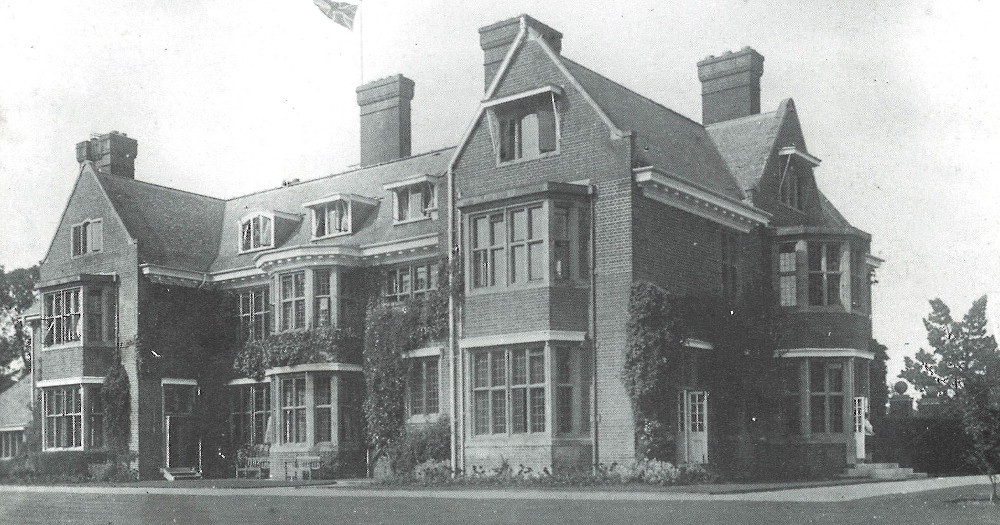In 1888 Alfred James Nicholson purchased some of Wokingham’s glebe land from the Ecclesiastical Commissioners for England, an area of over 17 acres laying behind the gardens of the houses in Rose Street, Broad Street and Milton Road. He later purchased a triangle of adjacent land that was left over when the Palmer Schools were built. As part of the terms of the purchase of the first piece of land, Alfred James took responsibility of maintain unadopted roads now Glebelands Road and a portion of Rectory Road. These lands included part of High Close where he built a house in 1890 at a cost of £ 8,000 and named it Glebelands.
Alfred James had inherited from his father Edward Nicholson who had made his fortune in linoleum.
The 1891 census revealed that there were six servants living at Glebelands; Mary Brenton, dressmaker; Matilda Shint, cook; Annie Goddard, nurse; Frances Wise, kitchenmaid; Eleanor Herman, housemaid and Emily Cooley, parlourmaid.
Glebelands Lodge was built next door and accommodated Henry Genery, coachman and his wife and two children plus Alfred Shorter, stable helper aged fourteen years. Above the entrance to Gleblands Lodge is the devil in the shape of a ram’s head. It is believed to be a warning to the servants to stay on the straight and narrow.
Alfred’s family increased, so he built a much larger house, designed by Ernest Newton R.A., one of the famous local architects, that was completed in 1897. Edward named this Glebelands and renamed the first house Clare Court.
After Alfred’s death, Letitia moved to Cherwood on the London Road and sold Glebelands in 1910 to Captain James Ogilvy Dalgliesh and his family who were living there at the time.. After the captain’s death in 1922 his widow moved to nearby Tithe Barn. The next owner was Colonel Sir Leslie Wilson (1876-1955), former chief government whip, who later represented the Crown as overseas governor, first in Bombay and then in Brisbane, for a total period of 19 years. He and Lady Wilson resided at Glebelands from 1928 until 1931.
The house stood empty when Sir William F. Jury, a local man and the first president of the Cinematograph Trade Benevolent Fund (CTBF), together with another founder of the fund, Reginald Bromhead came across it in 1935. William Jury purchased the property for 3,000 guineas and presented the house as a gift to the fund to be used as rest and convalescent home.
On the 9th July 1936, Sir Percy Vincent, the Lord Mayor of London formally opened the new home for initially 14 residents, which by 1937 held 40 residents and 21 convalescents.
Over the years a number of changes have been made; the Reginald Bromhead Wing was opened in 1958, a nursing wing was opened by the 2nd Countess Mountbatten of Burma, wife of film director Lord John Bradbourne in 1983; the stable block was converted into flats in 1991; 2005/06 a cloister containing 27 self-contained flats was added and, in the main house underwent a multi-million pond refurbishment and can now accommodate up to 41 residents in private on-suite rooms.
Her Majesty the Queen, patron of CTBF and his Royal Highness Prince Philip visited Gleblands on 12th of April 1994.
Wokingham Town Museum Unique Identifier: WTH0337

